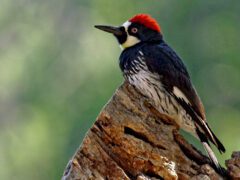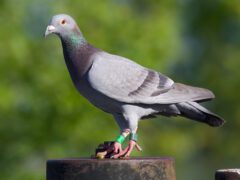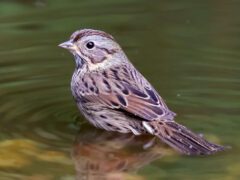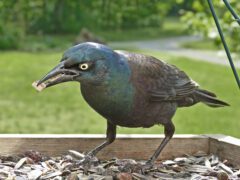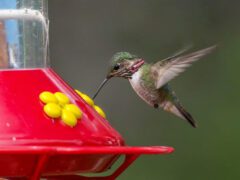The Four Keys to ID
- Size & Shape
A sturdy jay without a crest. It has a thick, straight bill, a long, rounded tail, and fairly long legs. In flight the wings are broad and rounded.
Relative Size
Larger than a Northern Mockingbird, smaller than a Northern Flicker; similar in size to a Blue Jay.

 between robin and crow
between robin and crowMeasurements
- Both Sexes
- Length: 11.4 in (29 cm)
- Weight: 2.3-3.9 oz (66-110 g)
© Volker Hesse / Macaulay Library
- Color Pattern
Rich green above and pale yellow-green below, with a blue crown, black throat and eyepatch, and yellow outer tail feathers.
© Edward Plumer / Macaulay Library - Behavior
Forages together in family flocks that rove woodlands and thickets, searching all levels of the vegetation for insects, fruit, and small vertebrates, maintaining contact with noisy calls. Highly social and territorial year-round, driving away rival Green Jays and mobbing predators such as owls or snakes.
- Habitat
Woodlands, thickets, and parks, especially sites with native trees, but also citrus orchards and parks.
© Jay McGowan / Macaulay Library
Regional Differences
Seven fairly similar subspecies range from Texas (glaucescens) to Honduras (centralis). Another very different and geographically isolated set of subspecies inhabits northern South America. These differ in having tufted forecrowns and bright yellow bellies. The South American subspecies are collectively sometimes called the Inca Jay.


















